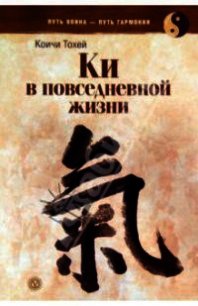Практика внимательности в повседневной жизни - Тарт Чарльз (бесплатные серии книг txt) 📗
Johansson, Rune. The Psychology of Nirvana. London: Alien & Unwin, 1969.
Johnson, Willard. Riding the Ox Home: A History of Meditation from Shamanism to Science. London: Rider & Company, 1982.
** Kabat-Zinn, Jon. Full Castrophe Living: Using the Wisdom of Your Body and Mind to Face Stress, Pain and Illness. New York: Delacorte, 1991.
Kornfield, Jack. Living Buddhist Masters. Santa Cruz, Calif.: Unity Press, 1977.
** Kornfield, Jack, and Paul Breiter. A Still Forest Pool: The Insight Meditation of Achaan Chah. Wheaton, Illinois: The Theosophical Publishing House, 1985.
** LeShan, Lawrence. How to Meditate. Boston: Little, Brown, 1974.
Levine, Stephen. Who Dies? An Investigation of Conscious Living and Conscious Dying. Garden City, New York: Anchor Press/Double-day, 1982.
Lipman, Kennard, and Merrill Peterson. You Are the Eyes of the World: Longchempa. Novato, Calif.: Lotsawa, 1987.
Miller, O. A sharing of breaths: An Eastern approach to illness and dying. The Quest, Autumn 1991 65-69.
Mullin, Glen. Selected Works of the Dalai Lama III: Essence of Refined Gold. Ithica, N.Y.: Snow Lion Publications, 1985.
Murphy, Michael, and Steve Donovan. The Physical and Psychological Effects of Meditation: A Review of Contemporary Meditation Research with a Comprehensive Bibliography (1931-1988). Big Sur, California: Esalen Institute, 1988.
Naranjo, Claudio, and Robert Ornstein. On the Psychology of Meditation. New York: Viking Press, 1971.
Norbu, Namkhai. Dzog Chen and Zen. Nevada City, Calif,: Blue Dolphin Publishing, 1986.
Norbu, Namkhai. The Cycle of Day and Night: An Essential Tibetan Text on the Practice of Dzogchen. Barrytown, N.Y.: Station Hill Press, 1987.
Owens, Glair Meyers. Zen and the Lady: Memoirs – Personal and Transpersonal – in a World in Transition. New York: Baraka Books, 1979.
** Patanjali (translated by Alistair Shearer). Effortless Being: The Yoga Sutras of Patanjali. London: Unwin Hyman Ltd., 1989.
Progoff, Ira. The Practice of Process Meditation. New York: Dialogue House Library, 1980.
Roberts, Bernadette. The Experience of No-Self: A Contemplative Journey. Boston: Shambhala Publications, 1982.
Russell, Peter. The TM Technique: An introduction to Transcendental Meditation and the Teachings of Maharishi Mahesh Yogi. London: Routledge & Kegan Paul, 1976.
Shafii, Mahammad. Freedom from the Self: Sufism, Meditation and Psychotherapy. New York: Human Sciences Press, 1985.
Shapiro, Deane. Precision Nirvana. Englewood Cliffs, N.J.: Prentice-Hall. 1978.
Shapiro, Deane. Meditation: Self-regulation Strategy and Altered States of Consciousness. New York: Aldine, 1980.
Shapiro, Deane and Roger Walsh (eds.). Meditation: Classic and Contemporary Perspectives. New York: Aldine, 1984.
** Shearer, Alistair and Richard Lannoy. Effortless Being: The Yoga Sutras of Patanjali. London: Unwin Hyman Ltd., 1989.
Sogyal Rinpoche. Dzogchen and Padmasambhava. Berkeley: Rigpa Fellowship, 1989.
** Sogyal Rinpoche. The Tibetan Book of Living and Dying. San Francisco: HarperSanFrancisco, 1992.
Sole-Leris, Amadeo. Tranquility and Insight: An introduction to the Oldest form of Buddhist Meditation. Boston: Shambhala Publications, 1986.
** Suzuki, Shunryu. Zen Mind, Beginner's Mind: Informal Talks on Zen Meditation and Practice. New York: John Weatherhill, 1970.
Tart, Charles T. 1972. A psychologist's experience with transcendental meditation. Journal of Transpersonal Psychology 3, 135-140.
Tart, Charles T. Meditation and consciousness: A dialogue between a meditation teacher and a psychologist. Noetic Sciences Review, 1988, no. 8, 14-21.
Tarthang Tulku. Gesture of Balance: A Guide to Awareness, Self-healing and Meditation. Emeryville, Calif.: Dharma Publishing, 1977.
** Thich Nhat Hanh. Being Peace. Berkeley, Calif.: Parallax Press, 1987.
** Thich Nhat Hanh. The Miracle of Mindfulness: A Manual on Meditation. Boston: Beacon Press, 1987.
Walker, Susan (ed.). Speaking of Silence: Christians and Buddhists on the Contemplative Way. New York: Paulist Press, 1987.
Walsh, Roger. Meditation research: The state of the art. In Roger Walsh and Frances Vaughan (eds.), Paths Beyond Ego: The Transpersonal Vision. Los Angeles: Jeremy P. Tarcher.
West, Michael A. (ed.). The Psychology of Meditation. Oxford: Clarendon Press, 1987.
Wilber, Ken, Jack Engler, and Daniel P. Brown. Transformations of Consciousness: Conventional and Contemplative Perspectives on Development. Boston: Shambhala Publications, 1986.
Yeshe, Y.T. Light of Dharma: A Commentary on the Three Principle Paths to Enlightenment. London: Wisdom Publications, 1984.
Zahler, Leah. Meditative States in Tibetan Buddhism: The Concentrations and Formless Absorptions. London: Wisdom Publications, 1983.
Я не уверен, что понимаю дзогчен в достаточной степени, чтобы представить сколько-нибудь авторитетный список литературы по этой теме. Но я хочу с особым энтузиазмом рекомендовать бестселлер Согьяла Рингпоче «Тибетская книга жизни и смерти» (Sogyal Rinpoche. The Tibetan Book of Living and Dying, Harper San Francisco, 1992).
Чтобы дать вам некоторое представление об этой книге, которая содержит суть учения дзогчен, я предлагаю свой реферат, который был написан мною для «Обзоров Института ноэтических наук».
На что можно надеяться в отношении этой книги? – Произвести полный пересмотр того, как мы смотрим на смерть и заботимся об умирании, а также того, как мы смотрим на жизнь и заботимся о жизни.
Это наиболее значительная книга из тех, что я обозревал для членов Института ноэтических наук, но мне следует начать с нескольких предостережений. Во-первых, она – реферат о смерти. Некая часть вас может не захотеть читать об этом, и ваш ум найдет веские причины для того, чтобы перейти к чему-нибудь другому. Есть столько важных дел, не правда ли? Но она также – о качестве вашей жизни, потому что если не иметь дело со своей смертью, то можно жить лишь частичной жизнью, тенью жизни.
Как сказано в книге,
«если мы взглянем на свою жизнь, то ясно увидим, как много мелких дел, так называемых «обязанностей», заполняет ее. Один учитель называет это «домоводством во сне». Мы говорим, что собираемся заниматься важным, но нам никогда не хватает времени. Даже для того, чтобы просто встать утром, нужно так много сделать: открыть окно, застелить постель, взять полотенце, почистить зубы, накормить кошку или собаку, помыть посуду, оставшуюся с вечера, обнаружить, что кончился сахар или кофе, пойти купить их, приготовить завтрак – список бесконечен. Затем нужно выбрать одежду, погладить и надеть. А как же волосы, надо же причесаться и привести себя в порядок! Мы беспомощно следим, как наши дни наполняются телефонными звонками и мелкими проектами со всеми обязанностями, за выполнение которых мы ответственны – или безответственны?»
Во-вторых, я не могу быть вполне объективным в связи с этой книгой, потому что у меня есть собственные страхи и проблемы со смертью – и с жизнью тоже. Как и большинство из нас, я питаю теоретический интерес к смерти и к тому, что может произойти после нее. Мой интерес теоретичен в том смысле, что я редко думаю о смерти, привлекая все свои способности и возможности, особенно эмоции, я думаю только умом. Хотя я знаю о лучших возможностях, я, как и большинство из нас, автоматически думаю о смерти как о чем-то, что случается с другими и как бы не случится со мной.
Хотя я редко размышляю о смерти, я знаю, что исключение какой-либо реальности – в данном случае реальности моей смерти и моей жизни – дорого стоит. Но ведь я могу отложить размышление о смерти на какое-нибудь неопределенное будущее, не правда ли?




